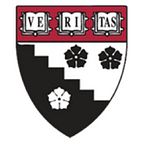Whose Land Are You On?
By Morgan Christopher
When I think of Thanksgiving, I think of Indians. However, not the lifeless and romanticized cartoon Indians that one sees on some Thanksgiving decorations, even on one wall here at HGSE. Instead, I think of my own family. Growing up in Arizona on the Salt River Pima Indian Reservation, I lived just down the dirt road from my grandparents, aunties, and cousins. Even though we practically saw each other every day, there was something very special about Thanksgiving for my family. Maybe, it was the green chile that traveled all the way from Paguate, New Mexico — my grandmother’s small Pueblo village. I remember eating turkey sandwiches with green chile for days and days after Thanksgiving. Beyond the delicious foods, I remember before our meal my grandfather saying a prayer and blessing to give thanks in our O’odham (Pima) language.
As I honor my first Thanksgivings and my now deceased grandfather, I also think about how to honor the actual first Thanksgiving. Aside from family, food, and prayer many Thanksgiving celebrations include “Pilgrims and Indians.” A narrative that often employs harmful stereotypes that renders Native peoples as one tribe, a caricature, and exploits and conflates our ceremonial clothing. Prior to HGSE, the Pilgrim and Indian narrative has always been separate from my own Native experience. However, now as an HGSE student my connection and more importantly my responsibility to this narrative and people has changed.
As a Native settler on Wampanoag land it is my responsibility to educate myself and others about whose homelands we occupy and that the Wampanoag Indians are the Indians in the first Thanksgiving. This task seems incredibly urgent when the present day Wampanoag people are reduced to a mere decoration on their own homelands while simultaneously all Native peoples are fighting for our humanity against settler colonialism-think pipelines and mascots.
I am co-chair of Future Indigenous Educators Resisting Colonial Education (FIERCE), a student-run organization that prepares educators to resist the manifestations of colonialism in schools. This November — Native American Heritage Month — our organization calls upon the HGSE community to participate in an activity called “Whose Land Are You On?” First, participants are asked to recognize that we all occupy Wampanoag land. Then participants are asked to “decolonize” a Western political map by covering the name of their home state or country with the names of at least one Native nation that originally lived or currently lives today within those constructed borders. FIERCE hopes that by the end of Native American Heritage Month, the colonial map will be decolonized with sticky notes that symbolically reflect the original peoples of the land. Additionally, FIERCE will show a film screening of “We Still Live Here” as a way to honor and center the voices of the Wampanoag peoples.
As a high school English teacher who has taught Native students for the past three years, my curriculum has never included the real Thanksgiving story. Instead, my students demanded hands-on, inquiry-based projects that allowed students to research topics of their choice. This student-centered curriculum reflects their multifaceted identities beyond their Nativeness and beyond their specific histories as Pueblo and Diné students from New Mexico. Native students are not a monolith. I firmly believe that an essentialist Native curriculum erases and harms Native students’ unique needs, interests, and histories. With this said, I am now responsible to carry the real Thanksgiving story back into my classroom. Although, I cannot speak for the Wampanoag community and people; I can challenge my students to question how their untold history connects to the Wampanoag history. I can no longer separate my students, family, and self from the history of Thanksgiving. The salvation of any tribe’s past, present, and future depends upon solidarity and learning of one another’s untold history.
As educators and celebrators of Thanksgiving, we all play a part in the Pilgrim and Indian story regardless if we are Native or non-Native. For Native peoples, we are responsible for one another; the erasure of one tribe’s narrative and history determines our own fate of misrepresentation and annihilation. For non-Native peoples, you are responsible for acknowledging whose land you occupy and unlearning what you perceive as United States history. As we enjoy family, food, and prayer this Thanksgiving, let us all say thank you to the first peoples of this land and remember that the popular dishes that fill our tables such as cranberries, squash, and corn all come from Native peoples. Sapa or Da’wa’ eh (thank you).
Morgan Christopher, master’s candidate in Learning and Teaching, is Onk Akimel O’odham, Kawaik, and Thai. She is passionate about rural students, restorative justice, and youth participatory action research. She believes that through education we must be responsible for what we consume, support, and ignore.
